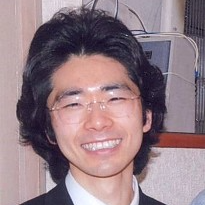Modified Gravity: From Black Holes Entropy to Current Cosmology
A special issue of Entropy (ISSN 1099-4300). This special issue belongs to the section "Astrophysics, Cosmology, and Black Holes".
Deadline for manuscript submissions: closed (20 September 2012) | Viewed by 113228
Special Issue Editors
Interests: particle cosmology; gravity theory; inflation; late time acceleration
Special Issues, Collections and Topics in MDPI journals
2. Institute of Space Sciences (ICE-CSIC), C. Can Magrans s/n, 08193 Barcelona, Spain
Interests: cosmology; dark energy and inflation; quantum gravity; modified gravity and beyond general relativity; quantum fields at external fields
Special Issues, Collections and Topics in MDPI journals
Special Issue Information
Dear Colleagues,
Recent cosmological observations strongly support that the current expansion of the universe is accelerating. The origin of such a cosmic acceleration mechanism is one of the most significant problems in modern cosmology. Indeed, this is shown by the fact that the Nobel Prize in Physics 2011 was presented to the finding of the current cosmic acceleration by means of the observations of the Type Ia supernovae.
There are two representative approaches to explain the current accelerated expansion of the universe. One is to introduce “dark energy” in the framework of general relativity. The other is to modify a gravitational theory, such as F(R) gravity, so that we can obtain so-called geometrical dark energy. It is believed that a modified gravitational theory must pass cosmological bounds and solar system tests because it corresponds to an alternative theory of gravitation to general relativity. As another meaningful touchstone of modified gravity, it is important to examine whether the second law of thermodynamics can be satisfied in the models of modified gravity.
The fundamental connection between gravitation and thermodynamics has been suggested by the discovery of black hole thermodynamics with black hole entropy and Hawking temperature. In addition, it was shown that the Einstein equation can be derived from the proportionality of the entropy to the horizon area together with the Clausius relation in thermodynamics. This consequence has been applied to various cosmological settings as well as modified gravitational theories. In particular, the connections between thermodynamics and modified gravity have recently been discussed extensively.
In this special issue, we discuss the application of thermodynamics to the test of a successful alternative gravitational theory to general relativity. Through this procedure, we can obtain a clue to resolve the dark energy problem “geometrically”. It is considered that any successful modified gravity theory should obey the second law of thermodynamics. If the second law is violated in certain universes in a model, it is more likely to be due to an incorrect generalization of the second law or some inherent inconsistency of the model itself. For the latter case, the model should be abandoned. It is strongly expected that the considerations of this special issue can produce our new physical understanding on entropy in the context of the relation between thermodynamics and gravitation and shed light on novel ingredients as well as insights on modern cosmology, in particular new properties of dark energy.
Prof. Dr. Sergei D. Odintsov
Dr. Kazuharu Bamba
Guest Editors
Keywords
- Quantum aspects of black holes, evaporation, thermodynamics
- Black hole entropy
- Modified theories of gravity
- Dark energy
- Cosmology
Benefits of Publishing in a Special Issue
- Ease of navigation: Grouping papers by topic helps scholars navigate broad scope journals more efficiently.
- Greater discoverability: Special Issues support the reach and impact of scientific research. Articles in Special Issues are more discoverable and cited more frequently.
- Expansion of research network: Special Issues facilitate connections among authors, fostering scientific collaborations.
- External promotion: Articles in Special Issues are often promoted through the journal's social media, increasing their visibility.
- e-Book format: Special Issues with more than 10 articles can be published as dedicated e-books, ensuring wide and rapid dissemination.
Further information on MDPI's Special Issue polices can be found here.







